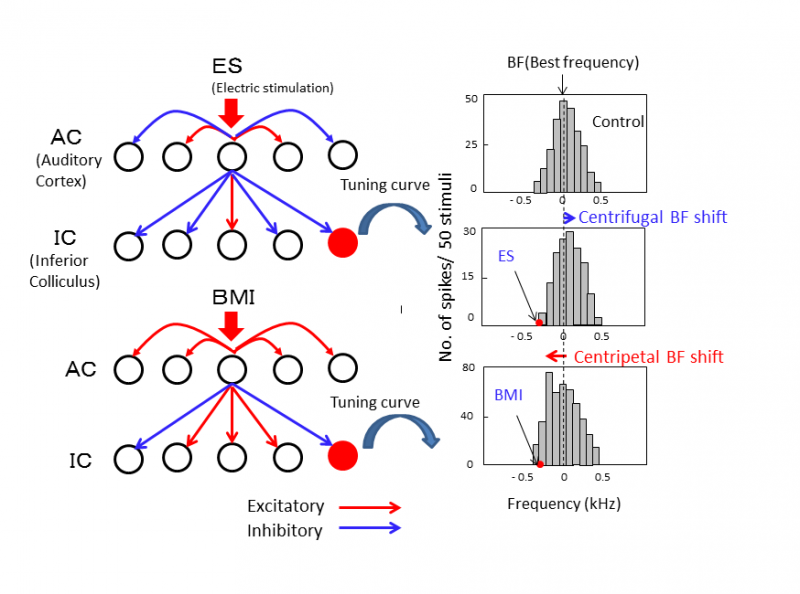Modelling auditory systems of bats for information processing applications

Scientists have developed a neural network model of a bat's auditory system to understand how bats rapidly discriminate between signals from edible insects and surrounding background noise. The report by researchers at UEC, Tokyo is published Neural Processing Letters.
Auditory systems: Modelling bats' information processing
An intriguing aspect of auditory signal processing is that certain creatures can tune in to specific frequencies relevant to behavior – such as for hunting or survival – while filtering out all other 'noise'. Scientists know that, while sensory information is transmitted from the ears to the cerebral cortex in a 'feedforward' manner, the information is also modulated by feedback from the cerebral cortex itself. Cortical neurons are excited by relevant signals, and tell the peripheral neurons to hone in on them while at the same time reducing signals from surrounding noise – a 'gating' mechanism, in other words. However, exactly how this process works is unclear.
Kazuhisa Fujita and Yoshiki Kashimori at the University of Electro-Communications in Tokyo, Japan, developed a neural network model of a bat's auditory system to examine how signal processing may be modulated by feedback from the cerebral cortex1.
Bats hunt by echolocation, and this involves detecting the Doppler-shifted frequency of sound echoes (as prey moves). Following feedback from cortical neurons, certain neurons in the auditory cortex are electrically stimulated by Doppler-shifted frequencies while others are not. This stimulation evokes synaptic modulation in neurons in the inferior colliculus (an area in the midbrain).
Fujita and Kashimori's model shows how an injection of GABA antagonist bicuculline methidide, or BMI, enhances signals from surrounding 'noise' picked up by other auditory neurons. The electrical stimulation from a relevant signal coupled with GABAergic inhibition enables the bats to balance activity in different neurons' receptive fields.
Their model could help understand how bats rapidly discriminate between signals from edible insects and surrounding background noise.
More information: Kazuhisa Fujita et al. Neural Mechanism of Corticofugal Modulation of Tuning Property in Frequency Domain of Bat's Auditory System, Neural Processing Letters (2015). DOI: 10.1007/s11063-015-9425-6
Provided by University of Electro-Communications



















